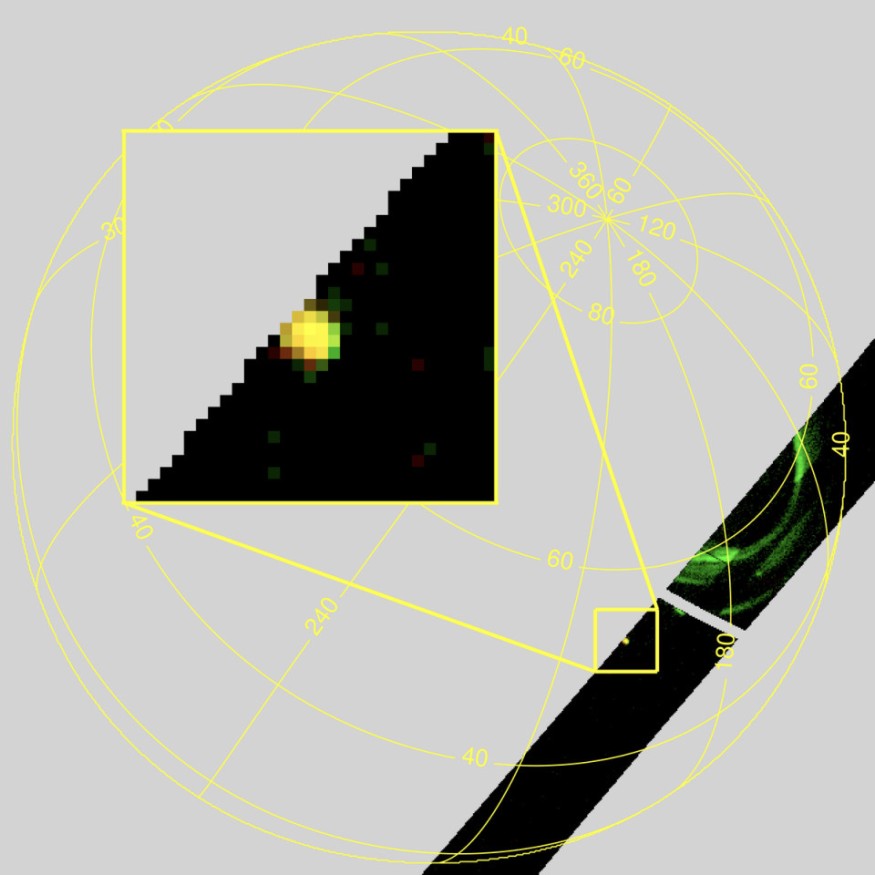NASA Juno spacecraft, which is presently circling Jupiter, has seen what seems to be a meteoroid crashing towards the planet.
One of the spacecraft's spectrometers, which takes ultraviolet pictures of the planet, made the chance finding.
According to New Scientist, the equipment looked at the ultraviolet glow from aurorae dancing in Jupiter's upper atmosphere when it saw a tremendous flash of light in the giant planet's night sky in April of last year.
NASA Juno Spacecraft Detects Meteor Hitting Jupiter Again
NASA's Juno spacecraft saw a quick flare in Jupiter's upper atmosphere in April 2020. The flash of light didn't stay long.
Still, it grabbed scientists' attention since its spectral features didn't match what would be anticipated in Jupiter's aurora, according to the Juno mission team.
According to Space.com, experts think that a meteor caused the Jovian disruption.
Juno's ultraviolet spectrograph (UVS), an instrument that analyses ultraviolet light, focused on Jupiter's aurora and hunting for gasses like hydrogen in its investigations, captured the occurrence.
According to a Juno mission report on March 1, experts believed that the length of the light burst and the UVS spectrum seen matched the event caused by a meteor in the planet's atmosphere the previous year.
The mission crew said the meteor speeding through Jupiter's upper atmosphere weighed between 550 and 11,000 pounds (250-5,000 kilograms).

However, this isn't the first time astronomers have discovered space rocks in Jupiter's atmosphere. In fact, two separate asteroids were observed zipping near the planet just a month apart in September and October of 2021.
While closer views with devices like UVS can provide more detail and let scientists confirm a sighting like this, Jovian fireballs may also be seen from Earth using tiny telescopes.
Such Events Are Rare, Scientists Say
Scientists point out that such events are infrequent. Thus, a flare in Jupiter's atmosphere can only be seen if a unique set of conditions occurs.
In 2021, however, Science Times said skywatchers in Japan saw a flare in Jupiter's atmosphere, which was subsequently verified by a scientific team to be a meteor.
Reports say Jupiter's strong gravitational pull makes it a popular target for meteors.
Jupiter has the most substantial gravity of any planet in the solar system; therefore, tiny asteroids are quickly drawn into its atmosphere. The Juno probe, which entered Jupiter's polar orbit in 2016, is still actively monitoring the planet.
But Juno isn't the first spacecraft to see meteors in Jupiter's atmosphere up close. Following NASA's Galileo spacecraft, which circled Jupiter from 1995 to 2003, this is the second long-term mission to the planet.
During their missions, Galileo and NASA's Voyager probes, which launched in the 1970s and reached interstellar space decades later, observed meteors in Jupiter's atmosphere.
The Juno mission, which reached Jupiter's orbit in 2016, monitors the planet and analyzes it in depth. The probe continues to shed light on the planet's atmosphere, weather, evolution, and formation history, among other things.
RELATED ARTICLE : NASA Discovered "Hot Jupiter" Exoplanet, Bigger But Less Massive Than Solar System's Largest Planet
Check out more news and information on Space in Science Times.










